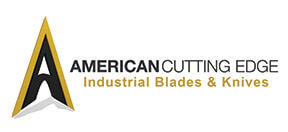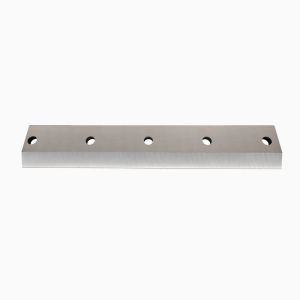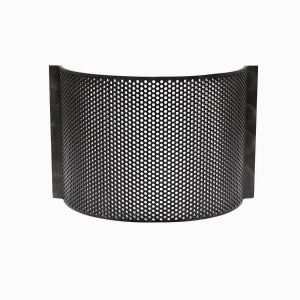How to Sharpen Your Granulator Blades

Granulating blades endure some of the most grueling conditions in the size reduction industry. Granulating hard plastics, paper, and other materials dull knives and lead to frequent blade changes. During this maintenance action, the machine is down and production is halted.
However, precision sharpening of these blades dramatically increases both the life of the blade and improves the output of the granulator. Machines that utilize precision sharpened blades operate more efficiently, which increases the overall output of the machine while simultaneously creating more consistency in the output
Precision sharpeners utilize sharpening equipment and processes specifically developed for the maintenance of these type of blades. Blades are returned to the customer in like-new condition, in both straightness and tolerance. This ensures that the gap between each granulator rotary blade and bed knife is maintained through more operational hours.
If you always do what you always did, you'll always get what you always got. “ Henry Ford
Selecting a Granulator Blade Sharpener
Before sending your blades out for sharpening, be sure that your vendor understands the tolerance requirements of your granulator. Each granulator machine has a set of blade tolerances that must be understood and implemented by your blade sharpener. These tolerances state the allowed measurements for the width of both new and sharpened knives.
For example, knives with holes are found in fixed blade granulators and cannot be adjusted. As such, it is imperative that these knives meet the strict straightness and width tolerances established by the granulator manufacturer. Machines that utilize slotted knives must meet straightness guidelines but can be adjusted to compensate for differences in width along the length of the blade.
Quality is an investment in the future. - Unknown
How are Granulator Blades Sharpened?
Proper sharpening is a multi-step process. Precision sharpeners begin by cleaning the blade using vibratory processing to remove plastic residue and facilitate high-quality sharpening. Next, blades are measured and sorted to ensure the least amount of blade material is removed while maintaining the tightest tolerances throughout the blade set.
To sharpen these blades, the knife is held in place by a magnetic chuck, which is rotated to match the precise angle needed to meet the tolerances of the granulator. With the knife held firmly, the grinder passes over the blade removing only one thousands to five- ten thousandths of an inch with each pass to prevent heating and excessive material removal.
To further reduce the temperature of the blade during sharpening and prevent heat checking the blade is flooded with coolant throughout the entire grinding process. Heat checking can alter the physical properties of the blade and reduce its overall hardness, and toughness leading to decreased life.
In most applications, blade material removal is less than fifty-thousandths and can be as little as fifteen-thousandths in blades used in light cutting applications. This means that most granulator blades can be sharpened at least ten times before reaching end of life. Since precision sharpening costs only 15 to 20 percent of the price of replacing a granulator knife, proper sharpening dramatically reduces the overall costs of maintaining your granulator.
Start somewhere and learn from experience. “ John Shook
Before You Send Your Granulator Blades for Sharpening
Granulator blades should always be sent for sharpening as a complete set. This ensures that the knife-to-knife tolerances required by the granulator manufacturer are maintained. It is also important to tell your precision sharpener what type of material will be granulated with the blades. Thin materials require tighter blade tolerances and should only be sharpened by vendors that can maintain a tolerance of one-thousandths of an inch throughout the blade set.
While your precision sharpener can and should check your machine's manual to know the minimum blade width specifications, it is important for granulator operators to understand these tolerances as well. This prevents incurring unnecessary shipping and sharpening costs.
Finally, to gauge the effectiveness of your current sharpener, maintain a sharpening and blade condition log. Before the blades out, note the condition and width of each blade; then do the same when the blade is returned. If the sharpener removes too much material, the blade's life is unnecessarily reduced.
Maintaining granulator blades ensures the most efficient performance of your granulator, resulting in greater throughput and higher-quality output. Reduce the overall cost of maintaining your blades by partnering with a precision sharpener who understands and achieves the strict tolerances set by your granulator equipment manufacturer.





